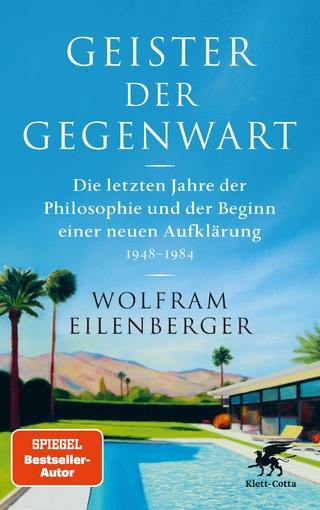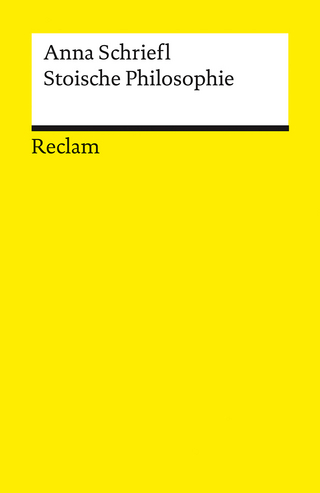
A Guide to Classical and Modern Model Theory
Kluwer Academic Publishers (Verlag)
9781402013317 (ISBN)
This volume:
-is easily accessible to young people and mathematicians unfamiliar with logic;
-gives a terse historical picture of Model Theory;
-introduces the latest developments in the area;
-provides 'hands-on' proofs of elimination of quantifiers, elimination of imaginaries and other relevant matters.
A Guide to Classical and Modern Model Theory is for trainees and professional model theorists, mathematicians working in Algebra and Geometry and young people with a basic knowledge of logic.
Structures.- 1.1 Structures.- 1.2 Sentences.- 1.3 Embeddings.- 1.4 The Compactness Theorem.- 1.5 Elementary classes and theories.- 1.6 Complete theories.- 1.7 Definable sets.- 1.8 References.- Quantifier Elimination.- 2.1 Elimination sets.- 2.2 Discrete linear orders.- 2.3 Dense linear orders.- 2.4 Algebraically closed fields (and Tarski).- 2.5 Tarski again: Real closed fields.- 2.6 pp-elimination of quantifiers and modules.- 2.7 Strongly minimal theories.- 2.8 o-minimal theories.- 2.9 Computational aspects of q. e.- 2.10 References.- Model Completeness.- 3.1 An introduction.- 3.2 Abraham Robinson’s test.- 3.3 Model completeness and Algebra.- 3.4 p-adic fields and Artin’s Conjecture.- 3.5 Existentially closed structures.- 3.6 DCF0.- 3.7 SCFp and DCFp.- 3.8 ACFA.- 3.9 References.- Elimination of imaginaries.- 4.1 Interpretability.- 4.2 Imaginary elements.- 4.3 Algebraically closed fields.- 4.4 Real closed fields.- 4.5 The elimination of imaginaries sometimes fails.- 4.6 References.- Morley rank.- 5.1 A tale of two chapters.- 5.2 Definable sets.- 5.3 Types.- 5.4 Saturated models.- 5.5 A parenthesis: pure injective modules.- 5.6 Omitting types.- 5.7 The Morley rank, at last.- 5.8 Strongly minimal sets.- 5.9 Algebraic closure and definable closure.- 5.10 References.- ? -stability.- 6.1 Totally transcendental theories.- 6.2 ?-stable groups.- 6.3 ?-stable fields.- 6.4 Prime models.- 6.5 DCF0 revisited.- 6.6 Ryll-Nardzewski’s Theorem, and other things.- 6.7 References.- Classifying.- 7.1 Shelah’s Classification Theory.- 7.2 Simple theories.- 7.3 Stable theories.- 7.4 Superstable theories.- 7.5 ?-stable theories.- 7.6 Classifiable theories.- 7.7 Shelah’s Uniqueness Theorem.- 7.8 Morley’s Theorem.- 7.9 Biinterpretability and Zilber Conjecture.- 7.10 Two algebraicexamples.- 7.11 References.- Model Theory and Algebraic Geometry.- 8.1 Introduction.- 8.2 Algebraic varieties, ideals, types.- 8.3 Dimension and Morley rank.- 8.4 Morphisms and definable functions.- 8.5 Manifolds.- 8.6 Algebraic groups.- 8.7 The Mordell-Lang Conjecture.- 8.8 References.- O-minimality.- 9.1 Introduction.- 9.2 The Monotonicity Theorem.- 9.3 Cells.- 9.4 Cell decomposition and other theorems.- 9.5 Their proofs.- 9.6 Definable groups in o-minimal structures.- 9.7 O-minimality and Real Analysis.- 9.8 Variants on the o-minimal theme.- 9.9 No rose without thorns.- 9.10 References.
| Erscheint lt. Verlag | 30.6.2003 |
|---|---|
| Reihe/Serie | Trends in Logic ; 19 |
| Zusatzinfo | XI, 371 p. |
| Sprache | englisch |
| Maße | 160 x 240 mm |
| Themenwelt | Geisteswissenschaften ► Philosophie ► Allgemeines / Lexika |
| Geisteswissenschaften ► Philosophie ► Logik | |
| Mathematik / Informatik ► Mathematik ► Algebra | |
| Mathematik / Informatik ► Mathematik ► Logik / Mengenlehre | |
| ISBN-13 | 9781402013317 / 9781402013317 |
| Zustand | Neuware |
| Informationen gemäß Produktsicherheitsverordnung (GPSR) | |
| Haben Sie eine Frage zum Produkt? |
aus dem Bereich


